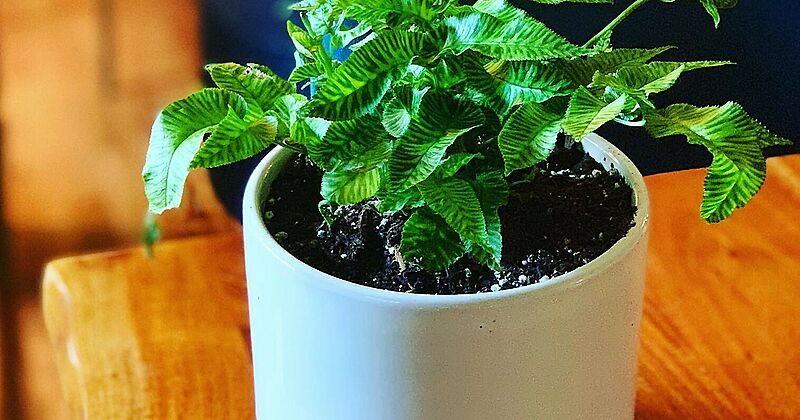Plant Pricing Truths to Grow By

Article Originally Published August 17, 2021 in Greenhouse Management Magazine Leslie F. Halleck
Let’s get real on a couple of points: First, we need to pay people better (way better) in our industry, and second, consumers are clueless when it comes to understanding how plants are or should be priced. This math does not compute. Low perception of value is still suppressing both plant prices, and thus wages, in the horticulture industry. So, what are we going to do about it? LFH
I was just having this conversation with some of my UCLA Horticulture students the night before I wrote this column. Many are new to the gardening industry and fledgling entrepreneurs. They have no idea how to price plants and are simply looking around to see what everyone else is doing. Which is, I suspect, how many of our current growers and garden centers started out doing things as well, back in the day.
Unfortunately this means they won’t be capturing their real cost of goods sold (potentially) in their pricing and may not ever make enough to pay themselves or employees as well as they should. This causes the same old pricing problems for established growers and retailers, and the vicious cycle continues…
Consumer backlash
As I’m in the middle of writing this column, I’m also reading a rant on Instagram (on a fairly high-profile account) about how everyone should just boycott anyone selling expensive plants and cuttings. That the only way to make plants cheap again is to stop buying them. The ranter insists that anyone charging a “high price” for a plant essentially has a black soul and is out for nothing more than your blood as a customer. They say there is no need to charge a lot for plants, because they should really just be here for all of us to enjoy without having to spend much. So, plant communism then? (Don’t get ruffled, I’m just poking a little fun here). Nice in theory, sure – but completely unrealistic.
Dysfunction junction
The relationship between the customers who buy our plants and products and industry management of plant price expectations has long been a dysfunctional one. Now that we are faced with training a huge new contingency of plant enthusiast customers who joined the hobby in 2020 – not to mention all the new side hustlers trying to make money with their new hobby – it’s feeling a bit like déjà vu all over again.
Clearly, we are still dealing with an intense lack of understanding of how the horticulture industry works; how plants come to market and what it costs to put them in a customer’s hands. The supply and demand issues that are plaguing our industry right now are also invisible to the consumer. Most customers simply don’t have any idea the struggles conventional growers and retailers are having securing and growing to meet their demand – all while they continue to expect cheap prices.
It just doesn’t work that way.
Unlock your growth potential with Profile Growing Solutions. Our revolutionary product portfolio is the key to cultivating total performance for professional growers in today’s horticultural and food production markets. Discover your plants’ potential today.
Fear-based pricing
When it comes to most ornamentals, what do too-low prices say about how we value what we grow and do for a living? I see annuals and vegetable plants all around the country priced exactly the same as they were 20 years ago. Same could be said for many perennials, shrubs and trees. It reeks of fear, and it blows my mind. Given all the current realities around inflation, increased cost of living, and doing business, I don’t see how that math can continue to work; especially if you want to properly compensate your employees.
Reality bites
Now, I will say there is a big difference between conventional growers of ornamentals and all the new houseplant growers and importers who are growing and selling exotics and tropicals as a side-hustle (or were established growers who transitioned in a big way to houseplants during the pandemic.) The former still isn’t charging high enough prices, in my opinion, while many of the latter are truly gauging inexperienced and unknowing customers.
Problem is, the industry isn’t talking directly to the customer about these distinctions or educating them on the realities facing the market right now. Social media influencers, who may or may not understand the actual business dynamics, are. Unfortunately, they may be unjustifiably (and unknowingly) transferring justified concern for overblown variegated Monstera prices onto the rest of the horticulture industry and ornamentals market.
Raise your voice
So, that potential pandemic high-price backlash you’ve been warned about (most specifically related to tropicals and houseplants) looks like it’s starting to gain traction amongst consumers. You’ll need to meet your customers where they communicate online and inject your voices into the conversation if you want to head it off at the pass. Not by lowering prices; but rather by raising prices along with raising awareness and perception of value through education.
The connection many consumers simply don’t think to make is that if a thriving and profitable horticulture industry doesn’t exist, then gardeners and houseplant lovers won’t have access to the plants and products they need and want to indulge in their hobbies. Their landscape designers and maintenance companies won’t either. If we don’t charge them enough for our plants and products, we can’t retain and grow the staff to do so, or stay in business. Thriving is a two-way street and we all rise together – prices included.


